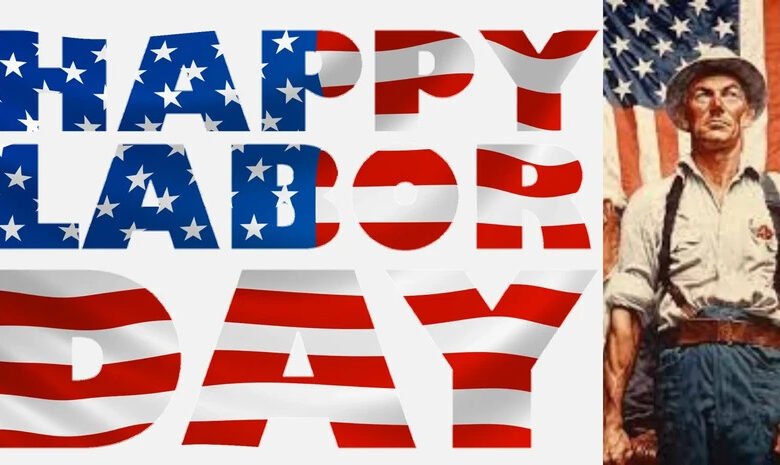Labor Day: Honoring the Struggles, Victories and Contributions of Workers

Do you have weekends off? Lunch breaks? Vacation pay? Eight-hour workdays? Social Security? If you answered “yes” to any of these, you can thank the labor movement and unions.
Many of the workplace benefits we often take for granted today are the result of decades of hard-fought battles led by workers who refused to settle for unfair treatment.
Each year, on the first Monday in September, the United States and Canada pause to commemorate Labor Day, a federal holiday dedicated to honoring the contributions and sacrifices of workers.
What began as a movement for fair wages and safer workplaces has grown into a celebration of the workers whose sweat and determination built our society.
A Brief History of Labor Day
The origin of Labor Day goes back to the late 19th century, a time when industrialization created deep divides between factory owners and workers. While profits soared for business owners, working conditions for laborers worsened as artisans shifted into factory jobs with long hours and meager pay.
The first Labor Day celebration took place on September 5, 1882, when about 10,000 workers organized by the Central Labor Union and the Knights of Labor marched in New York City. Their demands included shorter hours, better pay, and safer conditions.
Oregon became the first state to legally recognize Labor Day in 1887, followed by Colorado, Massachusetts, New Jersey, and New York. By 1894, 23 additional states had adopted the holiday. That same year, President Grover Cleveland signed legislation making Labor Day a federal holiday.
Significance of the Labor Movement
The American labor movement has roots as far back as the 18th century. One of the earliest known strikes occurred in 1768, when journeymen tailors in New York protested a pay cut.
By 1794, the Federal Society of Journeymen Cordwainers was formed in Philadelphia, one of the nation’s first organized labor groups, dedicated to protecting wages and working conditions for shoemakers.
Over the centuries, the labor movement pushed for laws that established:
- Minimum wages
- Maximum working hours
- Workplace safety standards
- The right to unionize
- Recognition of Labor Day
The passage of the National Labor Relations Act of 1935 finally guaranteed private-sector workers the right to join unions, though struggles for collective bargaining in the public sector continued into the 20th century, and remain contested in some states today.
How Labor Day is Celebrated
Labor Day is not just about reflection; it has also become a cultural tradition. The holiday weekend is widely seen as the unofficial end of summer, marked by travel, parades, neighborhood events, and backyard barbecues.
Food historian Robert F. Moss notes that barbecue has been part of Labor Day celebrations since the holiday’s early years, evolving from large public cookouts into the backyard gatherings many enjoy today. Whether in cities or small towns, the sense of community, sharing meals, time, and rest, remains central to the holiday.
The Evolving Labor Movement
When Labor Day was first established, unions faced enormous challenges: courts often ruled strikes illegal, and violent clashes between workers and employers were common.
Today, while union membership has declined compared to its mid-20th-century peak, there has been a resurgence of labor organizing and activism across industries.
This renewed energy reflects the enduring truth behind Labor Day: progress at work has always come through collective effort and persistence.
Lessons Parents Can Teach Their Children on Labor Day
1. The value of hard work
It is a day for parents to teach their children the importance of hard work. They learn that every comfort they enjoy is a result of people’s hard work, whether it be at school, the hospital, etc.
2. Children learn about teamwork
By learning about the labor movement, children see how workers joined together to demand fairness. This teaches them that teamwork and standing up for others matter.
3. They learn to treat others fairly
Today is a great opportunity to teach children the importance of standing for what is right and speaking up against unfairness.
4. They learn to appreciate workers
Celebrating Labor Day gives children the chance to appreciate the workers, such as their teachers, nurses, doctors, bus drivers, and even farmers who cultivate the food they eat.
5. The Importance of History
Learning about the Labor Day parades and the struggles of past workers helps children understand how workers’ rights were earned.
A Day to Reflect and Celebrate
Labor Day is more than just a three-day weekend or the close of summer. It is a reminder of the sacrifices and victories of workers past and present. Their determination secured the rights and protections that allow us to live and work with dignity today.
As families gather for parades, community events, or barbecues, let us also pause to honor the laborers whose sweat, courage, and persistence built the foundations of our nation.
Because when we celebrate Labor Day, we celebrate the workers themselves, their struggles, their triumphs, and their enduring impact on our society.





